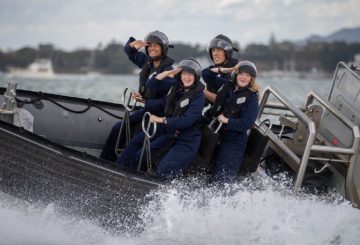인버카길 남동쪽에 위치한 와이투나 라군 (Waituna Lagoon) 은 토종 조류, 어류, 식물이 서식하는 서식지입니다.최근 이 석호는 시아노박테리아 블룸 (cyanobacterial bloom) 으로 알려진 독성 조류 발생으로 위협을 받았습니다.이에 대응하기 위해 1월에 이 석호를 바다에 개방했습니다.
사우스랜드 환경부의 수석 과학자인 카렌 윌슨 (Karen Wilson) 은 석호에서 더 이상 꽃이 피지 않는다고 말했습니다.최근 테스트에 따르면 수질이 정상으로 돌아왔습니다.하지만 개화가 어떤 영향을 미쳤는지는 당분간 알 수 없을 것입니다.
지역 의회가 석호에서 이 정도 크기의 꽃을 처리한 것은 이번이 처음이었기 때문에 진행 상황을 비교할 수 있는 이전 데이터가 없습니다.그럼에도 불구하고 윌슨은 지속적인 모니터링과 전문가들과의 협력 덕분에 시간이 지나면서 석호가 생태학적 건강을 되찾을 수 있을 것으로 기대하고 있습니다.
더 많은 데이터를 수집하기 위해 고주파 모니터링 장치를 임시로 설치했습니다.석호가 바다로 열리자 개화가 한창했지만, 이 지역 생태계에 필수적인 수생 식물인 루피아 (rupia) 에도 영향을 미쳤습니다.
자연보호부의 담수 과학 책임자인 니키 앳킨슨 (Nicki Atkinson) 은 최근 루피아 조사 결과를 아직 기다리고 있다고 말했습니다.그녀는 다가오는 봄과 여름에 루피아의 성장기를 보호하는 것이 중요하다고 덧붙였습니다.
석호에 영향을 미치는 주요 문제 중 하나는 인근 농장에서 영양분이 유출되고 있다는 것입니다.그러나 Atkinson은 사람들이 이 문제를 줄이기 위해 노력하고 있다고 말했습니다.그녀는 석호 상태에 대한 지역사회의 우려를 강조했습니다.
1976년, 와이투나 라군은 람사르 협약에 따라 국제적으로 중요한 습지로 인정받은 호주 최초의 지역으로 역사를 남겼습니다.




























































